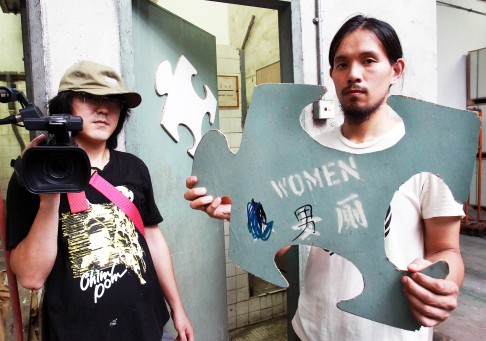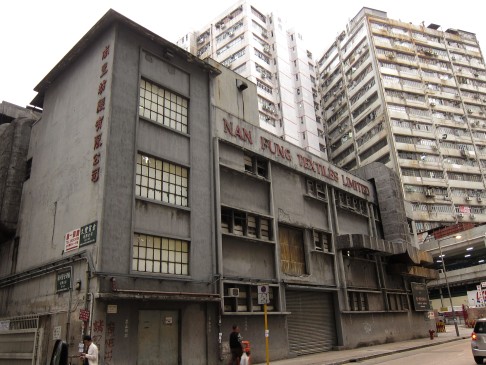Japanese artists to display Hong Kong’s textile heritage at London’s Saatchi Gallery
Avant-garde collective Chim-Pom will gather and reuse materials from old textile factory that is being converted to include a gallery

Chim-Pom, an avant-garde “artist collective” from Japan, is in the city to collect memorabilia from the 1950s-built Nan Fung textile factory in Tsuen Wan, before arts and creative cluster The Mills refurbishes the site ahead of a scheduled opening in 2018.
Chim-Pom members Masataka Okada and Motomu Inaoka explained their interest in Hong Kong was sparked by last year’s 79-day Occupy protests, ahead of their debut in the city.
“When we learnt about the Umbrella Movement last year, we wanted to come to Hong Kong, but we missed the chance as we were engaged in other work. But because of the protests, we have a major interest in the city and wanted to have a piece from here,” they said.
“Hong Kong is changing rapidly. Small shops, restaurants and heritage are fading away. We want to bring pieces of Hong Kong and incorporate them in our work, making new meaning and becoming new art pieces elsewhere.”

According to The Mills Gallery’s director Angelika Li, Chim-Pom’s plan is to cut three pieces of material from the factory that will be difficult to preserve during the conservation refurbishment, which is scheduled to start at the end of this year.
The Mills will be one of the largest privately-initiated heritage conservation projects in Hong Kong when it opens in three years, occupying a total of 260,000 sq ft. Around 10 per cent of that space will be dedicated to The Mills Gallery, which will include 15,000 sq ft of exhibition space, a library and lecture hall, a gallery store and cafe.

